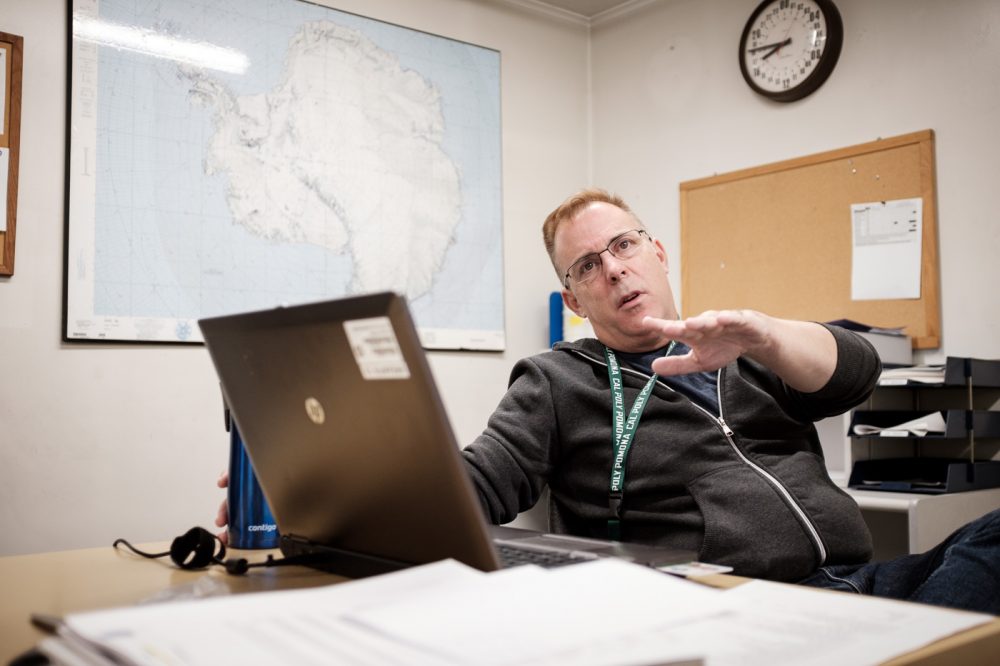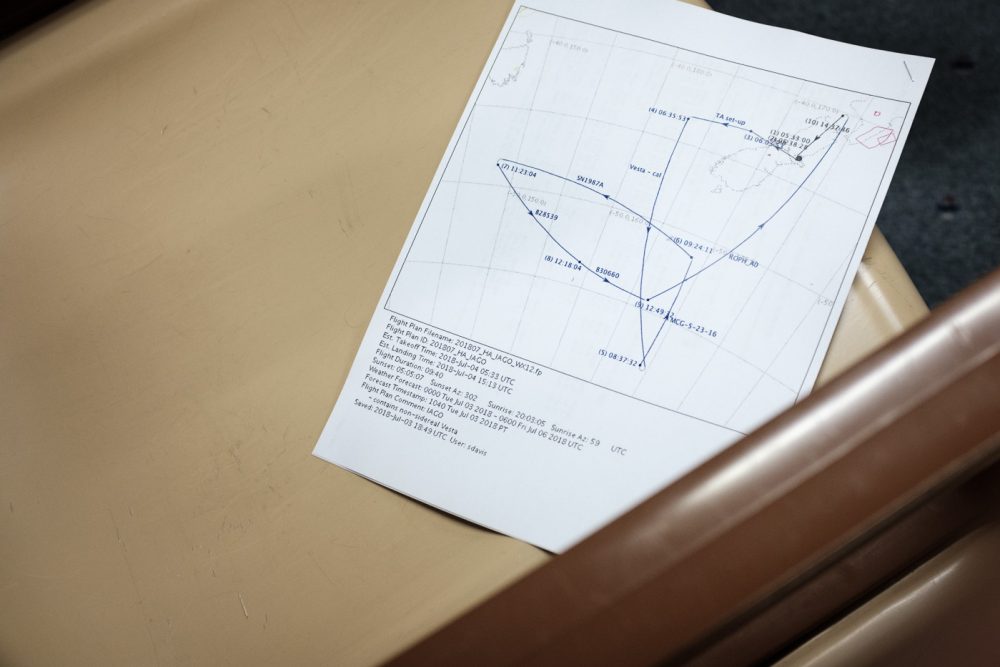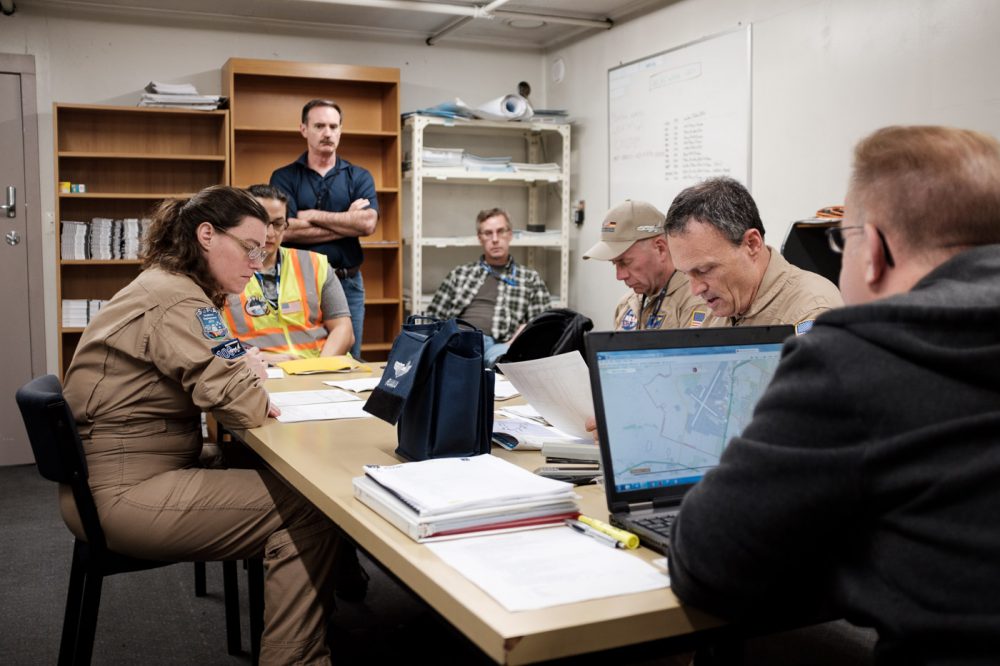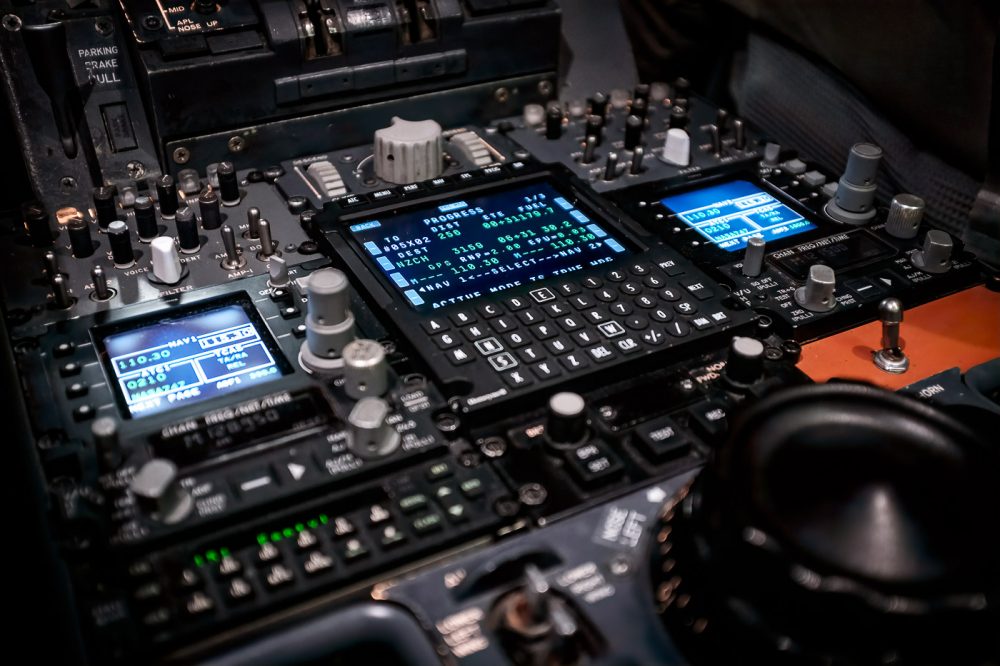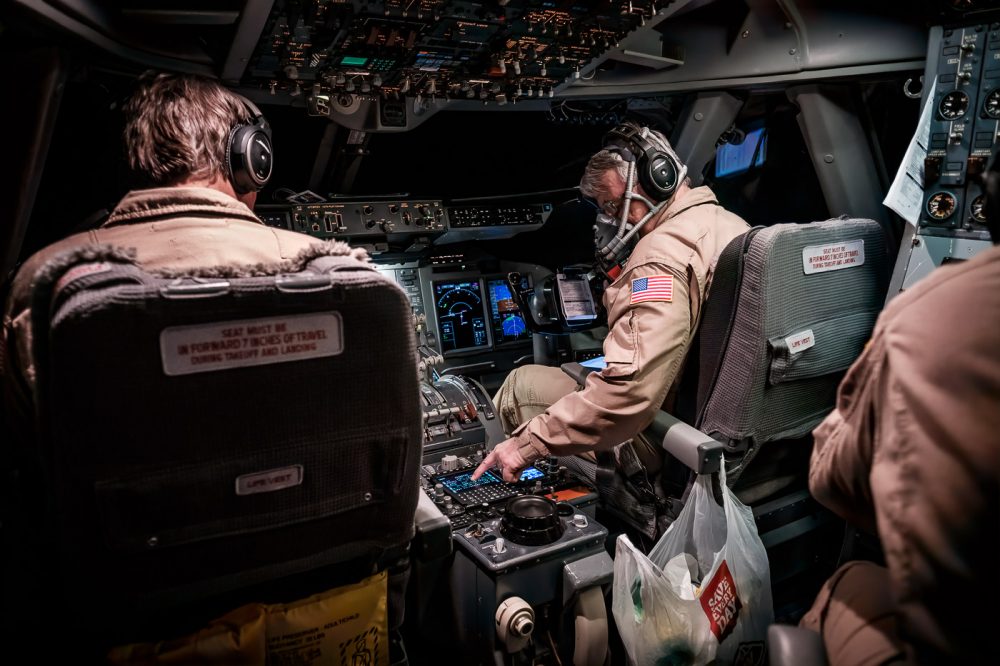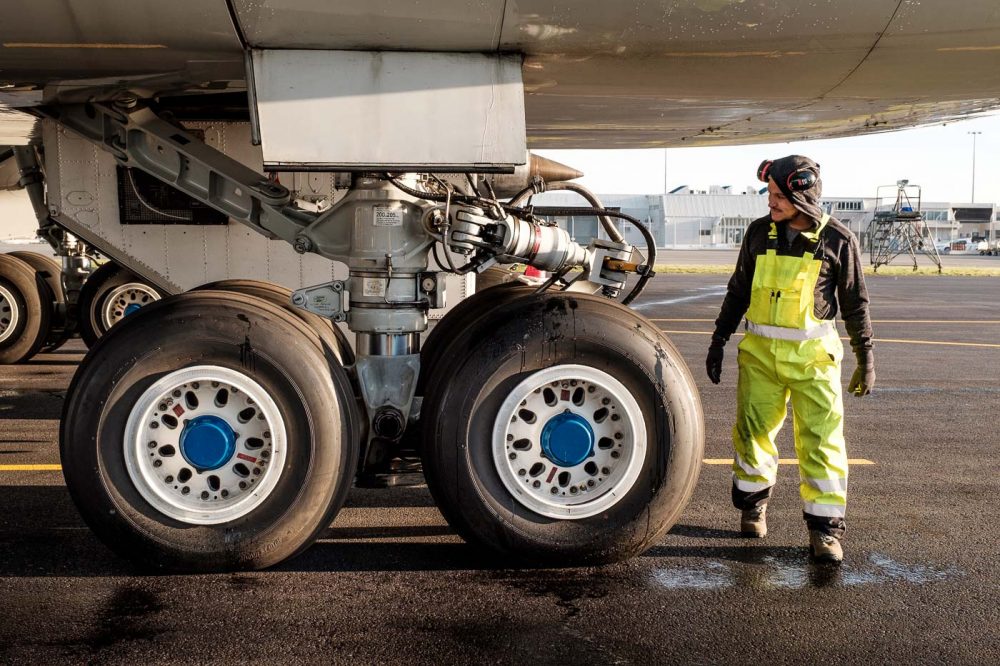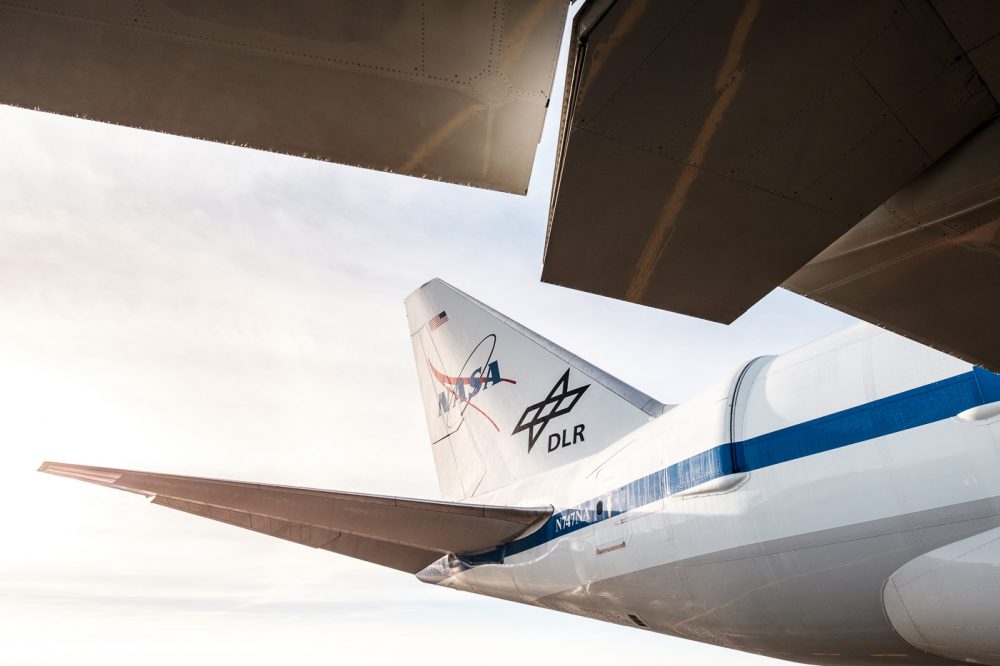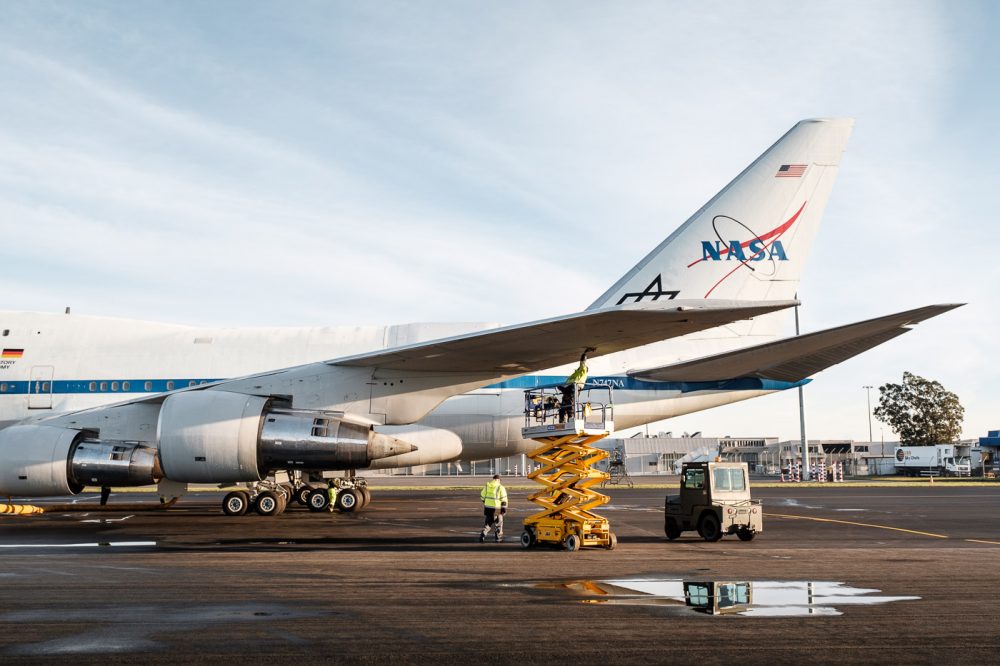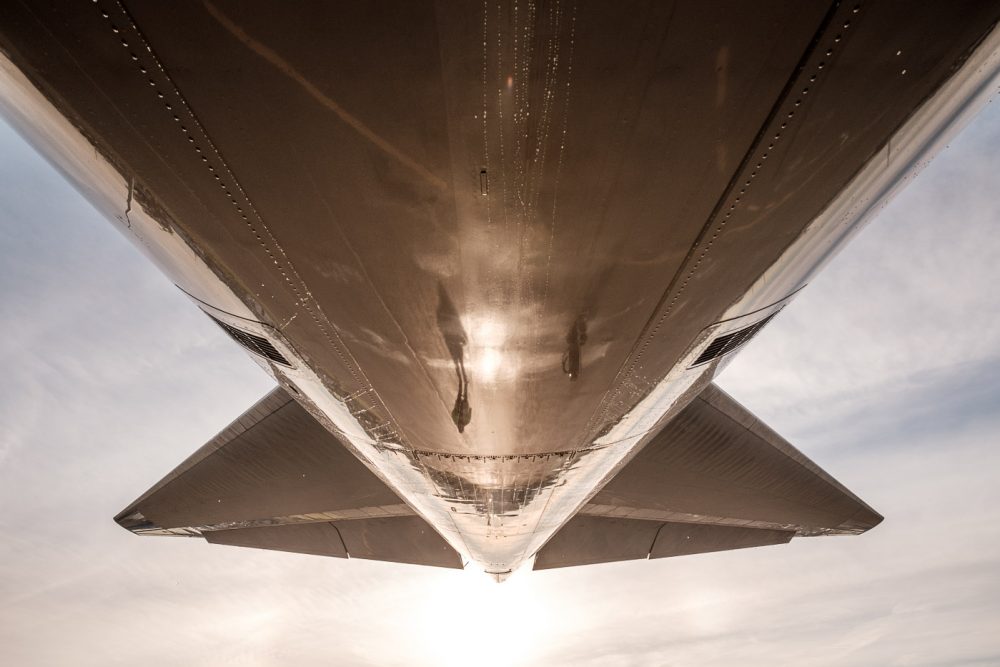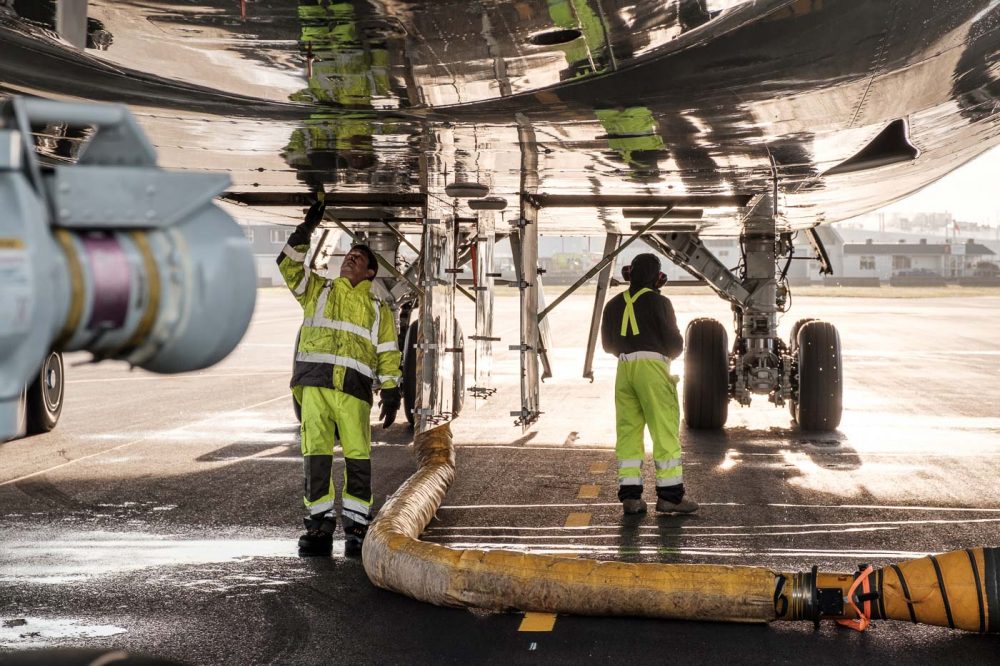Rendezvous with SOFIA – Part 3
Tempus Fugit
Flight 476 reaches its apex at 43,000 feet. It is not clear if chance or the flight planner’s sense of humour is to blame for a quirk in our schedule. We departed Christchurch on a Tuesday evening, crossed the international date line into Monday just before midnight, only to arrive back in Christchurch on Wednesday morning.

Nicholas Veronico of SOFIA’s communications team points out the quirks of our flight plan
Nicholas Veronico muses about our time-travelling escapades as I look out the window. Giant fissures run through the Antarctic pack ice 13km below us while we turn north-west for the second part of our flight. Our pilots align the telescope with the Milky Way’s centre when the next group of scientists take a seat at their consoles. For the next hours they will observe the water content of massive star forming clusters at the heart of the Milky Way.
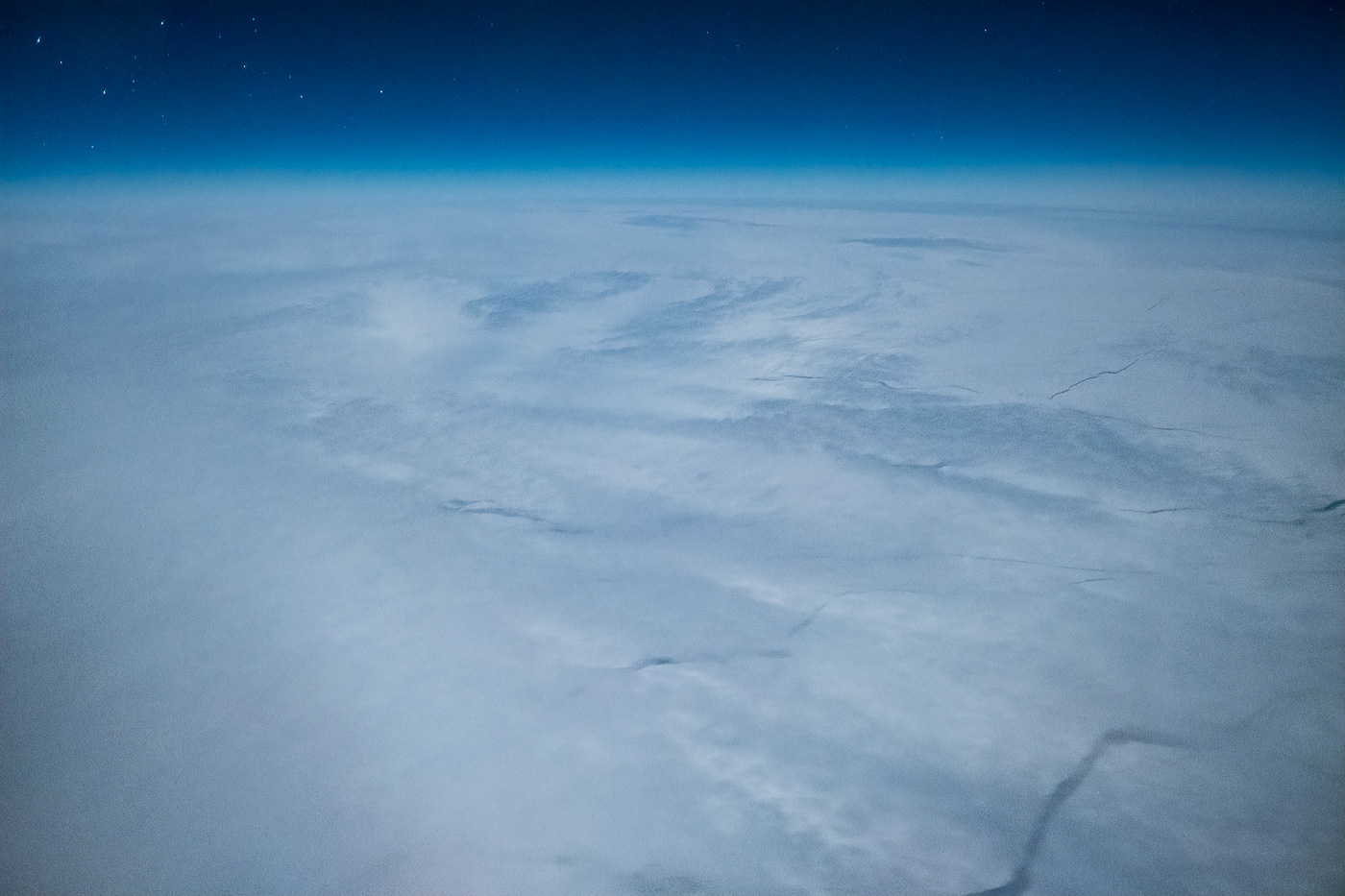
Some missions require zigzag flight plans that are owed to the telescope’s limited angle of view. It peers out of a garage-door sized hole in the fuselage that is so aerodynamically efficient that the pilots have to check their instruments to verify that it is indeed open. Jeff Wilson is one of the Flight Planners and Navigators responsible for planning SOFIA’s complex routes. In an age of computerised flying, Wilson explains, navigators are a dying breed. But by-the-second flight plans that consider the position of stellar objects in relationship to SOFIA’s limited angle of observation and the rotation of the Earth still demand utmost precision. Wilson found that the experience from a long career as a navigator in the US military comes in very handy when planning demanding flight plans for SOFIA.
Scientific requirements on SOFIA’s flight planners can be immense. In 2017, SOFIA observed an occultation of Kuiper belt object MU69 that depended upon split-second timing. The asteroid was temporarily moving in front of a distant star, thus eclipsing it for a few seconds. McAllister had to thread the proverbial needle when SOFIA, flying at a speed of 870 km/h, had to cross paths with the shadow of the eclipse that was moving at 20,000 km/h. SOFIA met its 500 millisecond time window and gathered important data that contributed to a course correction for NASA’s New Horizons space probe. In early January 2019, the probe performed the most distant fly-by in space history. Thanks to SOFIA’s groundwork, New Horizons was able to take high-resolution pictures of MU69, which has since been re-named Ultima Thule.
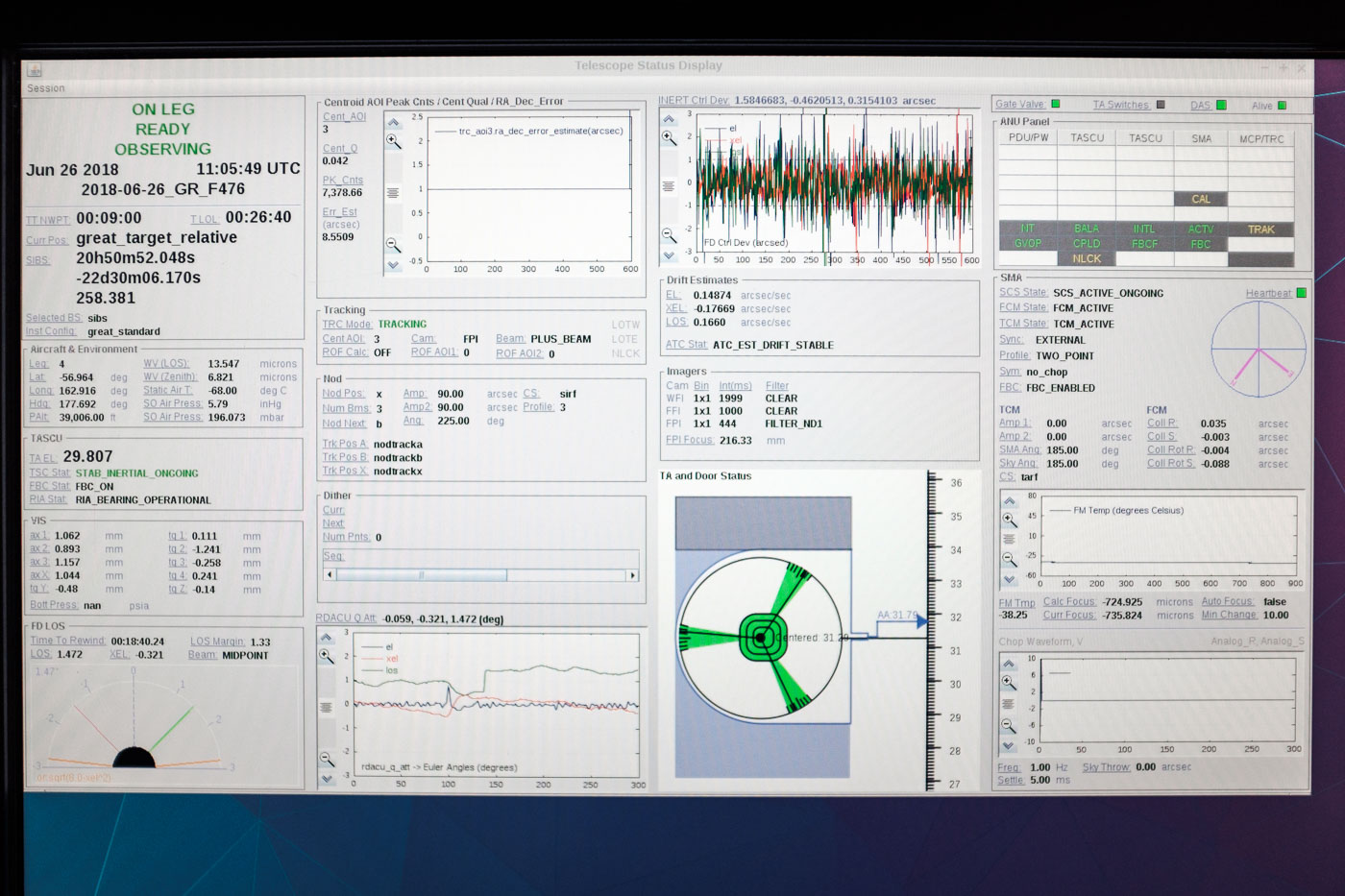
The Wee Hours
In Clipper Lindbergh’s kitchenette, (I am asked to not use the microwave, since it interferes with the science instruments) I meet Finnish scientist Anna Parikka, whose team is currently observing a star forming cluster with the cryptic name G316.76. Parikka is another late convert to the scientific community. An unfulfilling career as an accountant gave her the boost to pursue a degree in physics and astronomy. After a stop in Paris for her PhD, Parikka moved on to the University of Cologne where she works on her post doctorate on star formation. But a life in science is a life on the move. Parikka just accepted a new position at the Universities Space Research Association, an independent research organisation that cooperates with universities around the United States.

Finnish scientist Anna Parikka went from accounting to astronomy
At 4am fatigue sets in and it gets even quieter on board. Working for the program demands sacrifices that go well beyond a life on the move or a confused circadian rhythm. Deputy Program Manager of Operations Dave McAllister explains that ‘The work has to suit you. [Right now] I am away from my family during the US summer holidays’. Being away from home has become a little easier recently, since his kids are now grown. Before joining the SOFIA program, McAllister worked on the abort system of NASA’s new ORION capsule, a little rocket on top of the rocket that catapults astronauts out of harm’s way in case of an accident during launch. I cannot help but think that you meet all sorts of interesting people aboard a flying telescope.
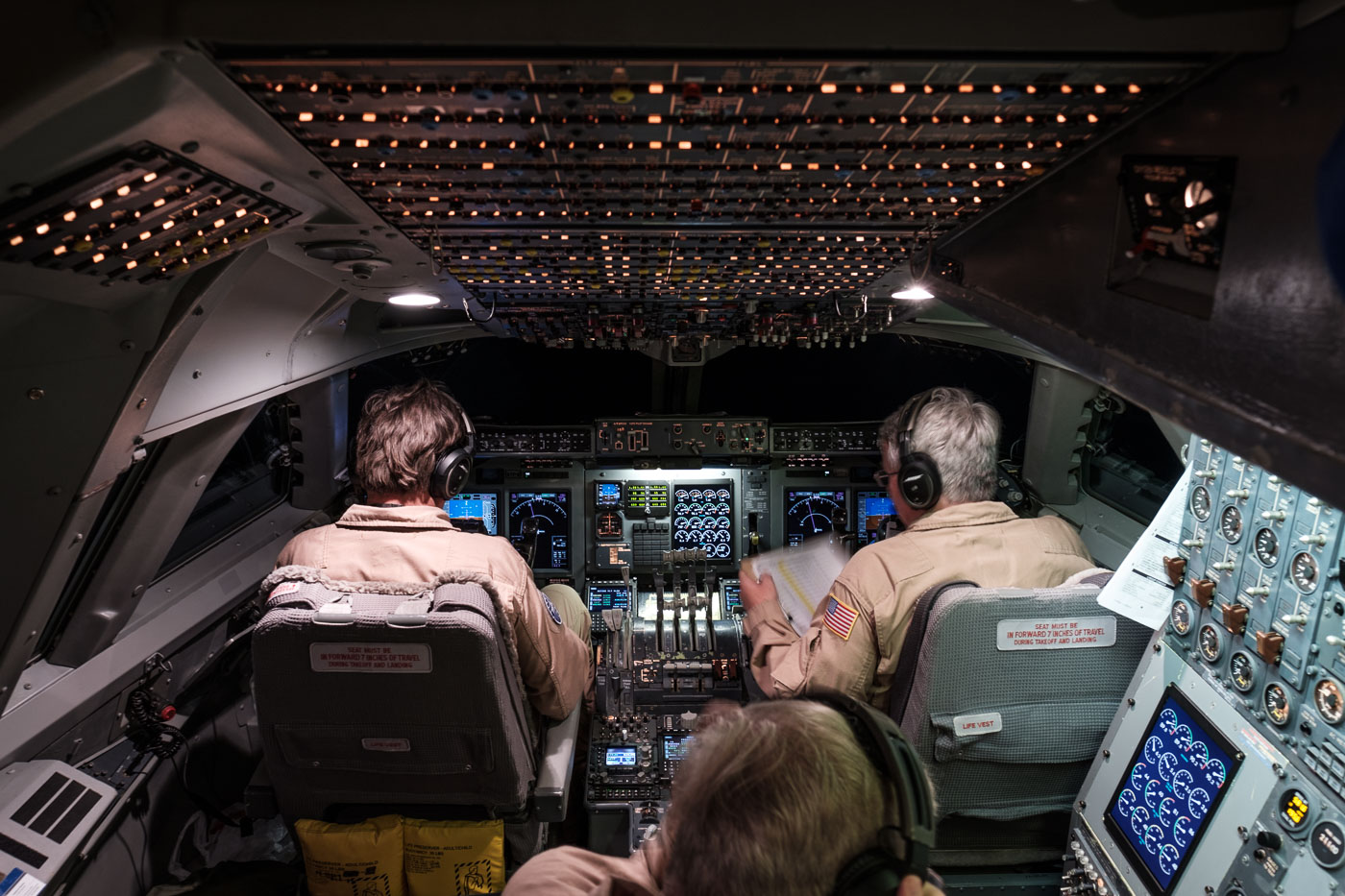
Return to Base
We are on our final approach towards Christchurch when I strap into the jump seat of Clipper Lindbergh’s cramped cockpit. On a commercial airliner only two pilots would occupy the space that four of us are sharing. But I could not be in better company since the cockpit crew easily has a hundred plus years of combined experience in flight testing. Flight Engineer Tom Speer is a true veteran of the 747 program since its inception in the 1970s. Speer, now in his 70s, has retired from piloting the aircraft but remains aboard as the aircraft’s engineer. His reputation amongst the SOFIA team is near-mythical, and it is said that he knows every nut and bolt aboard a 747.
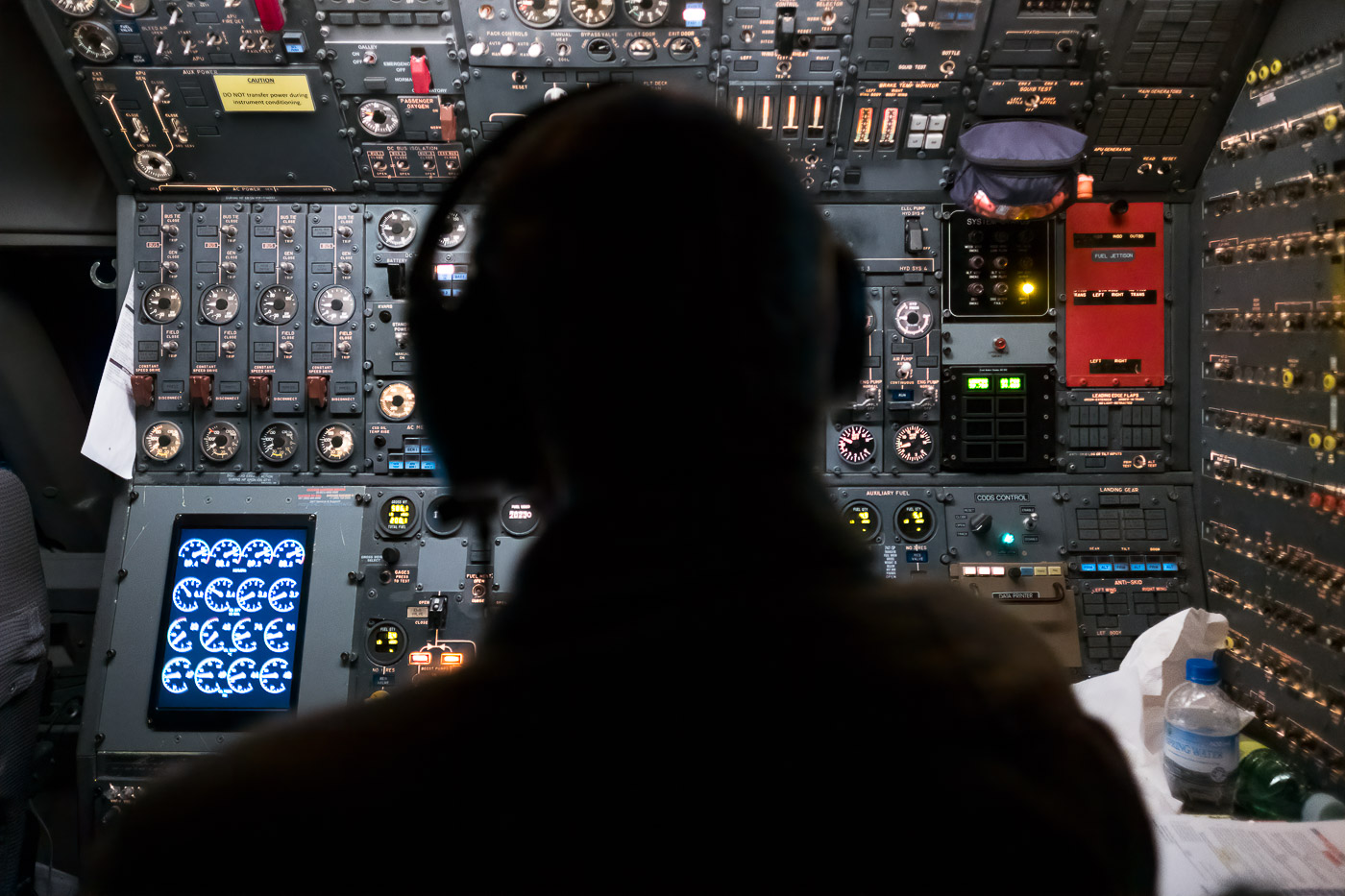
Flight Engineer Tom Speed gets Clipper Lindbergh ready for landing
As we descend towards home, I feel reminded of the characters in ‘The Right Stuff’, Tom Wolfe’s famous book about the early US space program. Even though I’m just staring at the backs of their heads, the cockpit crew emanates a calm sense of competence that is underlined by their bone-dry humour and ‘Yes Sir, No Sir’ demeanour. On my headset I listen to them musing about ‘that bright light outside the window’ (aka the moon), and a supposed Chinese station on the far side of it. Somehow they manage to slip Star Wars quotes in between long strings of numbers. I decide that I am in safe hands.
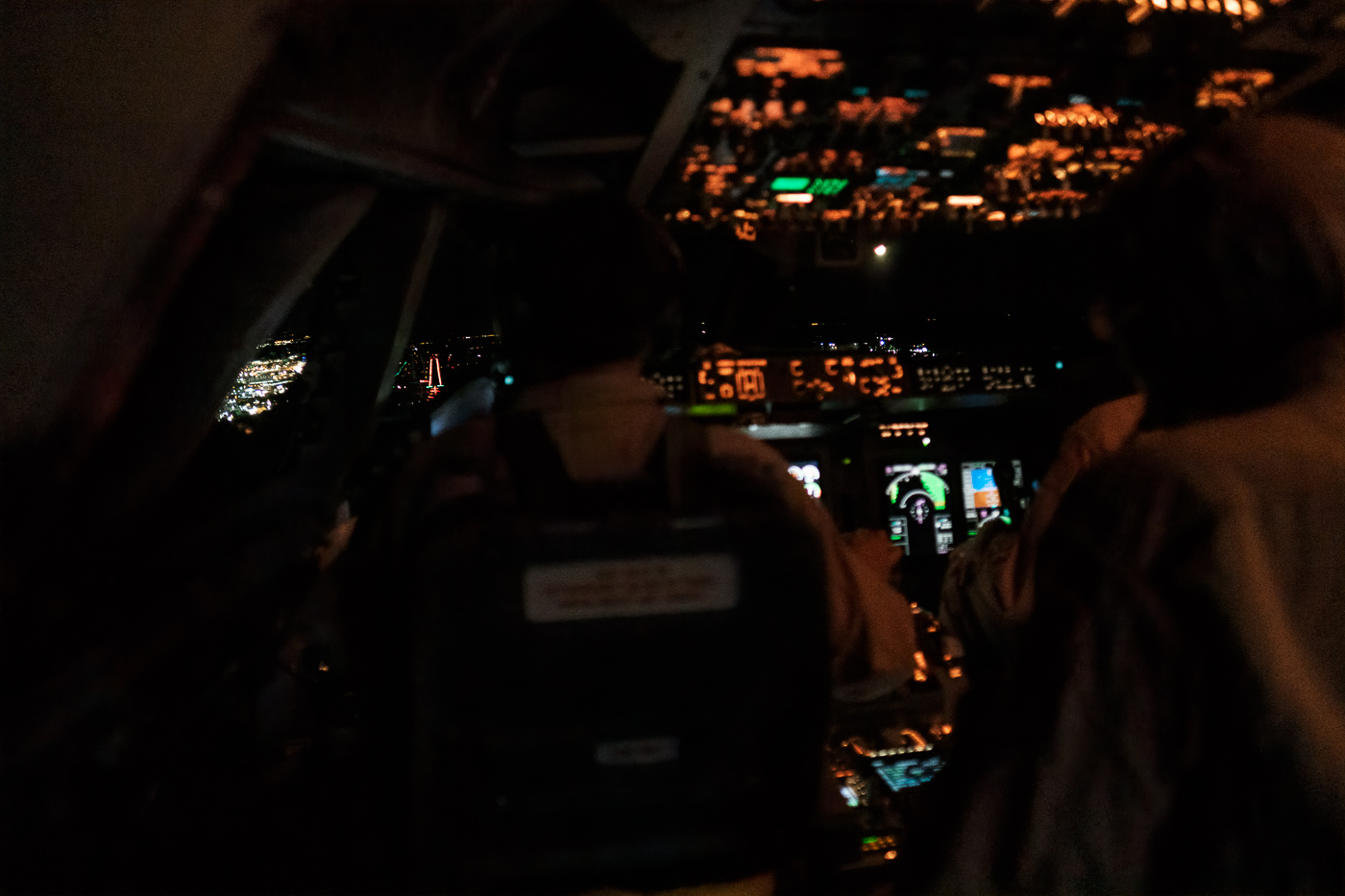
A long night of observations comes to an end as flight 476 approaches the lights of Christchurch Airport
We arrive back in Christchurch in the early morning hours. Crew and science team are saying their goodbyes before heading off to bed. The aircraft, meanwhile, will fly another mission with another crew later in the evening. But first the ground crew must tend to their bird. Aircraft mechanic David Viera and his colleagues are dwarfed by the impressive size of Clipper Lindbergh’s wheels during routine inspections of hydraulic systems. Without the relentless efforts of the day shift, SOFIA would not be going anywhere.
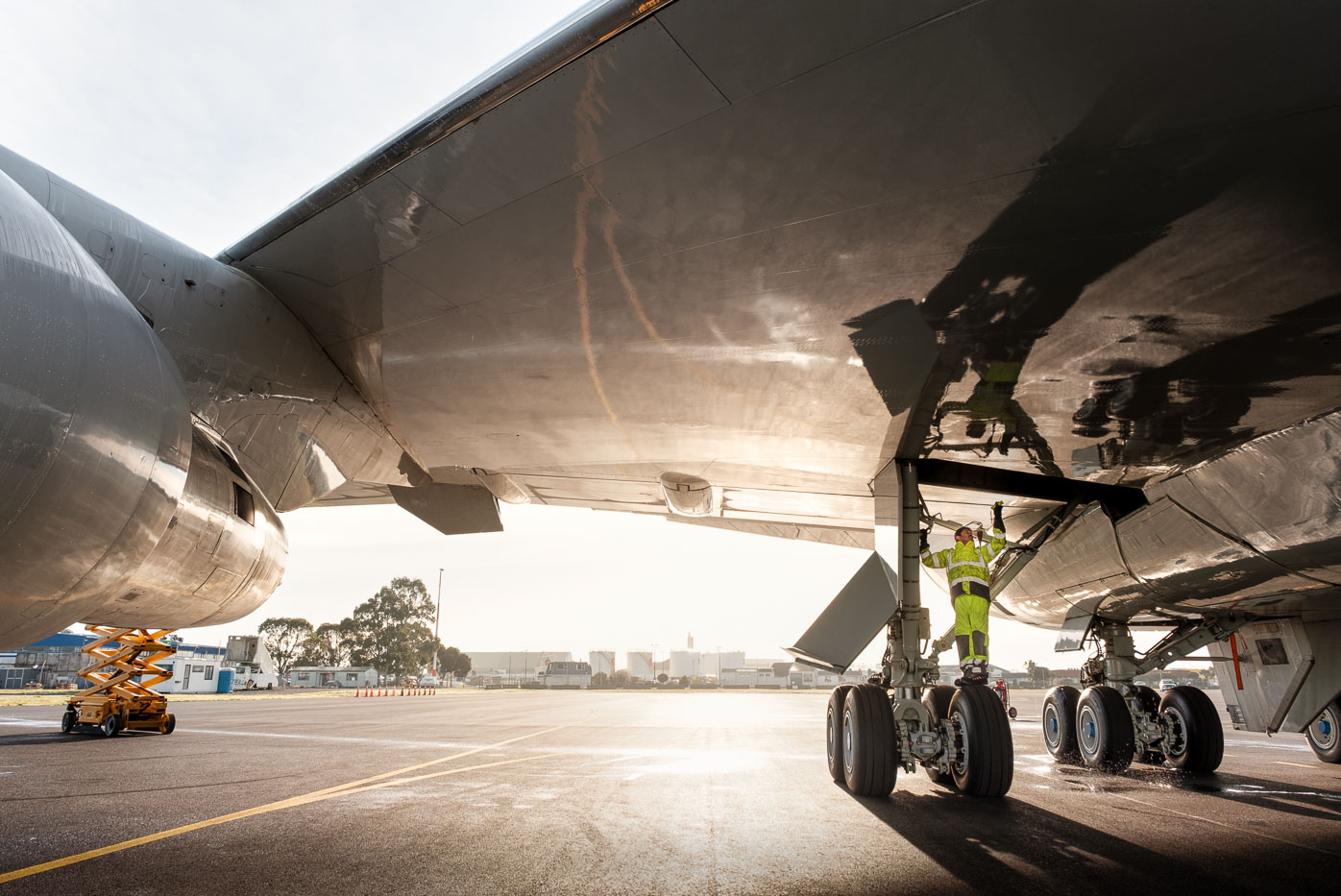
Aircraft Mechanic Francisco Rodriguez performs a post-flight inspection of the aircraft’s landing gear
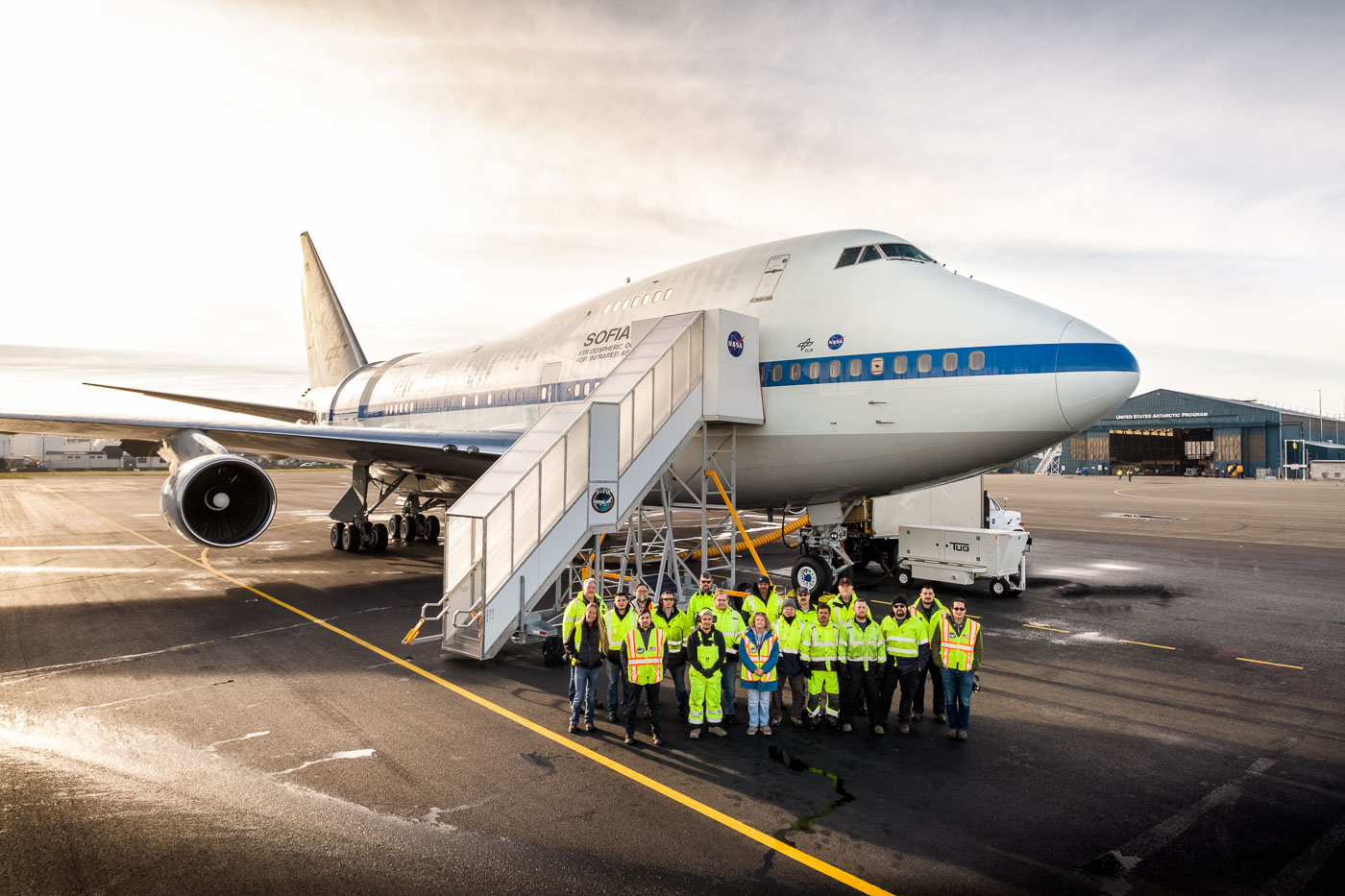
The day shift poses for a team photo
The End
The sun blazes across Christchurch airport’s tarmac when I hand in my visitor badge. The last few days were a personal highlight for many reasons. Photography is about access to stories, and I am very grateful that the SOFIA team entrusted me with theirs. While having flown aboard a NASA telescope to the edge of Antarctica makes my inner child jump with joy, it was my time with SOFIA’s people that left the biggest impression on me. Despite challenging work hours and long separations from their families, everyone I had the pleasure of talking to beamed with passion for their jobs. There is a buzz to spending time at the cutting edge of discovery that I will miss dearly.
I would like to extend a special thank you for the experience of a lifetime to Nicholas Veronico and Kassandra Bell. Despite busy schedules and around-the-clock hours, they fulfilled obscure wishes for access and went the extra mile on land and in the air. I owe my not being sucked into an engine intake to their unwavering vigilance.

Copyright: All text and images are copyright of Lightforge and Dennis Radermacher. No reproduction or republication without my express permission.
Media enquiries: Please contact [email protected]


